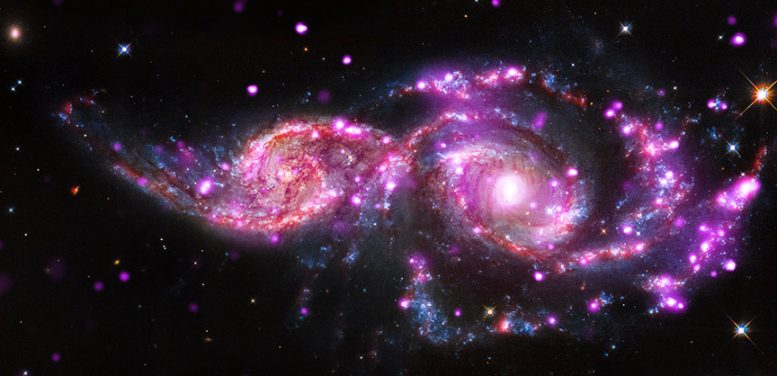
Chandra image of “ultraluminous X-ray sources” (ULXs) found using data from NASA’s Chandra X-ray Observatory. Credit: X-ray: NASA/CXC/SAO/S.Mineo et al, Optical: NASA/STScI, Infr
This new Chandra image shows NGC 2207 and IC 2163, which have hosted three supernova explosions in the past 15 years and have produced one of the most bountiful collections of super bright X-ray lights known.
At this time of year, there are lots of gatherings often decorated with festive lights. When galaxies get together, there is the chance of a spectacular light show as is the case with NGC 2207 and IC 2163.
Located about 130 million light-years from Earth, in the constellation of Canis Major, this pair of spiral galaxies has been caught in a grazing encounter. NGC 2207 and IC 2163 have hosted three supernova explosions in the past 15 years and have produced one of the most bountiful collections of super bright X-ray lights known. These special objects – known as “ultraluminous X-ray sources” (ULXs) – have been found using data from NASA’s Chandra X-ray Observatory.
As in our Milky Way galaxy, NGC 2207 and IC 2163 are sprinkled with many star systems known as X-ray binaries, which consist of a star in a tight orbit around either a neutron star or a “stellar-mass” black hole. The strong gravity of the neutron star or black hole pulls matter from the companion star. As this matter falls toward the neutron star or black hole, it is heated to millions of degrees and generates X-rays.
ULXs have far brighter X-rays than most “normal” X-ray binaries. The true nature of ULXs is still debated, but they are likely a peculiar type of X-ray binary. The black holes in some ULXs may be heavier than stellar mass black holes and could represent a hypothesized, but as yet unconfirmed, intermediate-mass category of black holes.
This composite image of NGC 2207 and IC 2163 contains Chandra data in pink, optical light data from the Hubble Space Telescope in red, green, and blue (appearing as blue, white, orange, and brown), and infrared data from the Spitzer Space Telescope in red.
The new Chandra image contains about five times more observing time than previous efforts to study ULXs in this galaxy pair. Scientists now tally a total of 28 ULXs between NGC 2207 and IC 2163. Twelve of these vary over a span of several years, including seven that were not detected before because they were in a “quiet” phase during earlier observations.
The scientists involved in studying this system note that there is a strong correlation between the number of X-ray sources in different regions of the galaxies and the rate at which stars are forming in these regions. The composite image shows this correlation through X-ray sources concentrated in the spiral arms of the galaxies, where large amounts of stars are known to be forming. This correlation also suggests that the companion star in the binary systems is young and massive.
Colliding galaxies like this pair are well known to contain intense star formation. Shock waves – like the sonic booms from supersonic aircraft – form during the collision, leading to the collapse of clouds of gas and the formation of star clusters. In fact, researchers estimate that the stars associated with the ULXs are very young and may only be about 10 million years old. In contrast, our Sun is about halfway through its 10-billion-year lifetime. Moreover, analysis shows that stars of various masses are forming in this galaxy pair at a rate equivalent to form 24 stars the mass of our sun per year. In comparison, a galaxy like our Milky Way is expected to spawn new stars at a rate equivalent to only about one to three new suns every year.
Reference: “A comprehensive X-ray and multiwavelength study of the Colliding Galaxy Pair NGC2207/IC2163” by S. Mineo, S. Rappaport, A. Levine, D. Pooley, B. Steinhorn and J. Homan, 3 December 2014, The Astrophysical Journal.
DOI: 10.1088/0004-637X/797/2/91
The authors of the paper are Stefano Mineo of the Harvard-Smithsonian Center for Astrophysics in Cambridge, Massachusetts; Saul Rappaport from the Massachusetts Institute of Technology (MIT) in Cambridge, Massachusetts; Alan Levine from MIT; David Pooley from Sam Houston State University in Huntsville, Texas; Benjamin Steinhorn from Harvard Medical School in Boston, Massachusetts, and Jeroen Homan from MIT.

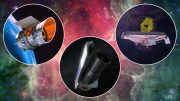
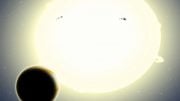
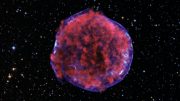
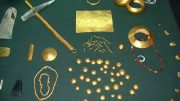
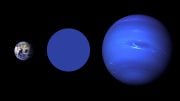
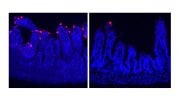
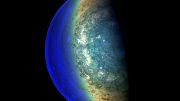

Very interesting to see– galactic collisions like this can be veritable factories of X-ray emissions and supernova explosions.